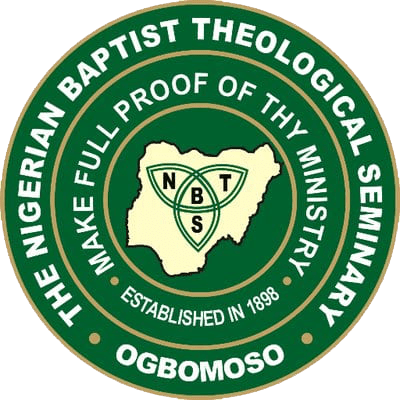by Matthew Oladipo Abioye
I like to start by establishing the fact that Baptist churches in the Nigerian Baptist Convention historically have gone through one form of degree or the other in localizing the Baptist Hymnal (1956, Ed.). In the first place, the hymnal has been largely translated into several local languages of major tribes in Nigeria, the Yoruba, Hausa, Igbo, Urhobo, Itsekiri to mention, but a few. The songs in this hymnal are being freely sung in worship in English or vernacular, depending on the mode of communication the church has chosen for their official use. In fact, Yoruba folks through the Nigerian Baptist Convention already have a version of the Yoruba hymnal for worship that has the hymns and choruses (set into solfa notation for learning of the melody) in one single book. It is noteworthy to emphasize it again, that the translation of the hymns into various vernacular has helped the worshippers to be able to own the music, applying them to every form of worship and Christian programme like naming ceremony, burial programme, wedding, music concerts and so forth.
The localization has been made possible also, by adjusting the form of the music lyrically, rhythmically, or in style. One major thing that appears to be very common and obvious in the use of the hymns in the vernacular language is that the rhythms are in most cases altered. For instance, singing any song with syncopated rhythm, the song is simply taken into a straight note either in the 44 or 34 timing depending on the meter of the song. For instance, in “Rock of Ages Cleft for Me” (B.H 108, 1956 Ed.) with the syncopation in the rhythm, it is sung in a straight rhythm, ignoring the syncopation. Rhythmic complexes in African music thus exist though, but in the overlaying multiple lines of fast running note, and so on. Most of the Africans and Nigerian people, in particular, find it unenjoyable, so to speak, to sing syncopated rhythms in hymns for worship naturally.
Another factor accountable for the localization of song or music is, contextualization of the features and symbols in some of the hymns, for instance – a sort of acculturation, perhaps. Again, Nigerians are very familiar with rocks, so when we sing “Rock of Ages Cleft for Me“, it simply resonates with the knowledge and experience of our environment. Besides this, is to say also that, most of these hymns have been with us for a long time in history, evolving along with the culture of the land, hence, people are very familiar with them, and so, they have owned them. That is to say, it is already part of the local property for worship and other programmes. Though, oftentimes I have found myself struggling with the way the rhythms of the hymns are handled and attempt to want to insist on the correct rhythm. At the same time, it has always occurred to me that people/worshippers already enjoyed singing it that way, and so owned it that way to worship. And perhaps, any attempt to want to do any adjustment may be tantamount to creating a sort of confusion for the worshippers.
It is quite obvious also that in most of the churches and Christian gatherings, Western hymns or songs have been largely localized in the area of accompaniment for performance because these hymns are now being sung or performed in worship and are accompanied by other local musical instruments like dundun (talking drum), sekere (mascaras), agogo (gong), put-drum, konga drum, etc., alongside with another Western musical instrument like Trumpet, Saxophone, lead and bass guitar, and the obvious is the joyous atmosphere and dancing mood which has been created. The truth is that Nigerians like to dance when they are happy, and so in a worship atmosphere as a way of paying obeisance and showing their appreciation to God, who is the Supreme Being. Unlike in the late 1970s, hymns were sung in worship and accompanied with only either piano or organ.
It may interest someone to note that some classical music is also going through localization here and there presently. “Halleluyah Chorus” by G. F. Handel, for instance, has been translated into several local dialects like Yoruba, Urhobo and so on. And the style of performance is being altered into hip-up, taking the anthem away completely from its strict rhythm and timing, all in an attempt to domicile the music into what the local people can easily relate with “contemporary style” as it is popularly called.

